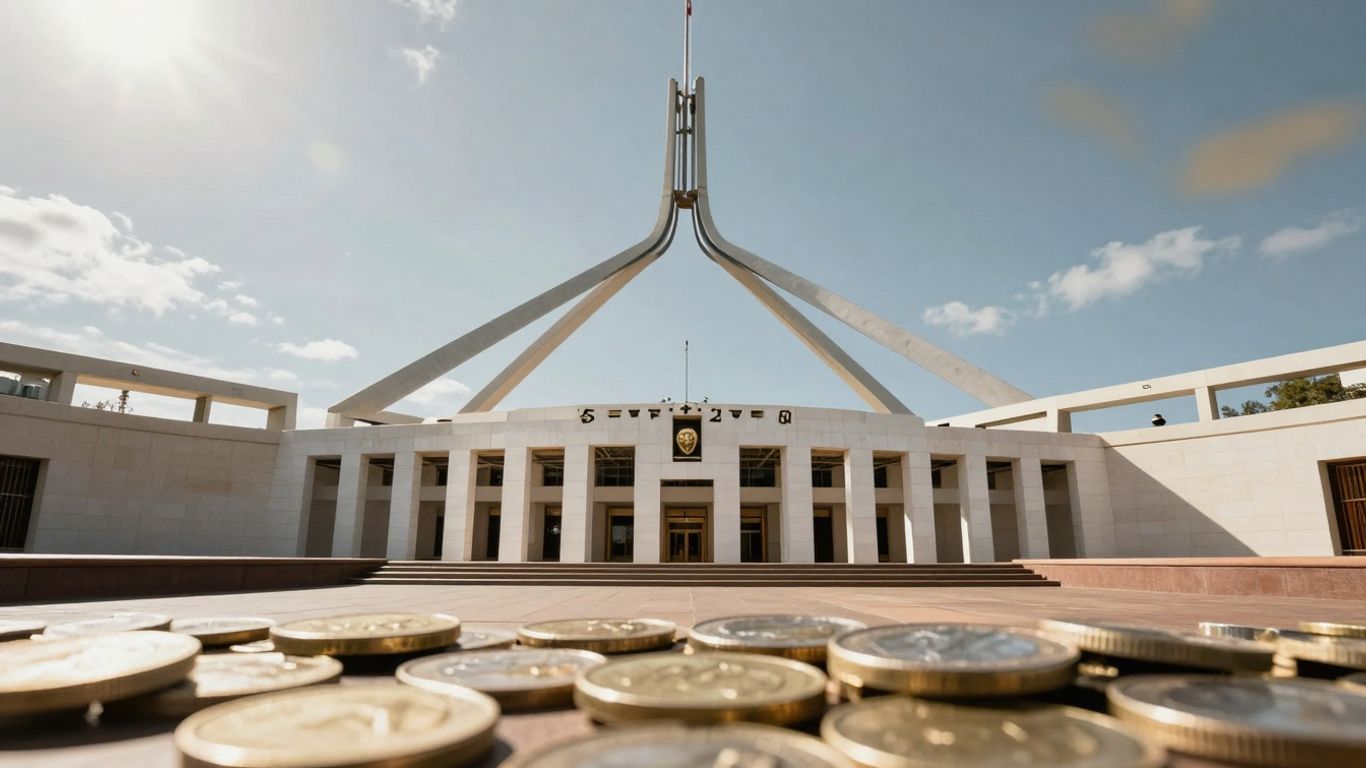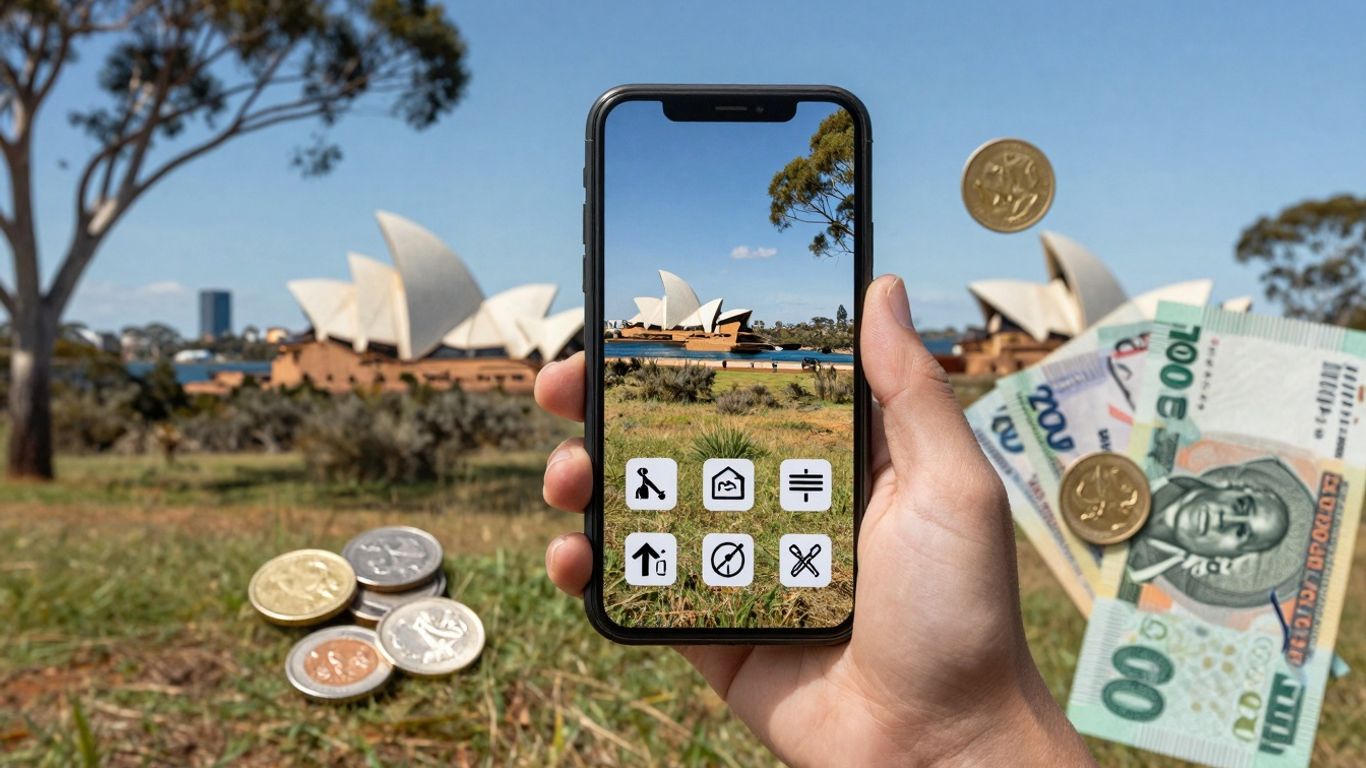Feeling a bit lost with your money? You’re not alone. Lots of us get by without a proper plan for our cash, which can lead to some stressful moments. But it doesn’t have to be that way. Learning the basic steps to budgeting is actually pretty straightforward. It’s all about getting a handle on where your money’s going and making sure it works for you, not against you. Let’s break down how to get started.
Key Takeaways
- Figure out how much money is coming in and where it’s all going out.
- Sort your spending into ‘must-haves’ and ‘nice-to-haves’.
- Set some clear goals for your money, like saving for a rainy day or a holiday.
- Pick a budgeting method that fits your lifestyle, like the 50/30/20 rule.
- Keep an eye on your budget and make changes when life throws you a curveball.
Understanding Your Financial Landscape
Right then, let’s get down to business with understanding where your money is actually going. It’s a bit like figuring out what’s in your pantry before you plan your meals, you know? You can’t really make a smart plan if you don’t know what you’re working with.
Track Your Income and Expenses
First up, you’ve got to get a handle on all the money coming in and all the money going out. This means jotting down every dollar you earn, whether it’s from your main gig, a bit of freelance work, or even that birthday money from Aunt Carol. Then, you need to do the same for everything you spend. Yep, everything. From your rent and bills to that morning coffee and the occasional impulse buy at the supermarket. Keeping a clear record is the absolute bedrock of any sensible budget. You can use a simple notebook, a spreadsheet, or even one of those fancy apps. The method doesn’t matter as much as the consistency.
Here’s a quick way to start:
- List all your income sources for the month.
- Record every single expense, no matter how small.
- Add it all up at the end of the week to see the totals.
Categorise Your Spending: Needs Versus Wants
Once you’ve got a good chunk of your spending tracked, it’s time to sort it out. Think about what you absolutely need to live – things like housing, food, utilities, and transport to work. These are your non-negotiables. Then, there are the ‘wants’. These are the things that make life more enjoyable but aren’t strictly necessary, like streaming subscriptions, eating out, new clothes, or going to the movies. It’s not about cutting out all the fun stuff, but about being aware of where your money is going and making conscious choices. This helps you see if you’re spending more on wants than you realised, which is a common pitfall when you’re trying to get your finances sorted. Understanding this difference is key to building an effective budgeting process.
Being honest with yourself about needs versus wants is a big step. It’s easy to convince yourself that something is a ‘need’ when it’s really just a ‘want’ you’ve gotten used to.
Setting Your Financial Compass
Alright, so you’ve got a handle on where your money’s been going. Now, it’s time to figure out where you actually want it to go. Think of this as plotting your course. Without a destination, you’re just drifting, and that’s no way to get ahead financially.
Define Your Savings and Spending Goals
This is where you get specific. What are you actually trying to achieve with your money? Is it a new car, a holiday, or just building up a bit of a safety net? Write it down. Make it real. Having clear goals makes sticking to a budget a lot easier because you know why you’re doing it. It’s not just about cutting back; it’s about making your money work for what you want.
Establish Clear Financial Objectives
This is a bit like the savings goals, but maybe a bit broader. Think about the big picture. Do you want to be debt-free in five years? Save up for a house deposit? Maybe you just want to feel less stressed about bills each month. These objectives give your budget direction. They’re the milestones that tell you if you’re on the right track. For instance, if your objective is to save for a house, your savings goal might be a specific deposit amount. Using a budget calculator can really help you see how achievable these objectives are.
Setting clear goals turns a budget from a chore into a tool for achieving what you want in life.
Here’s a quick way to think about your objectives:
- Short-term: Things you want to achieve in the next year or so, like paying off a credit card or saving for a holiday.
- Medium-term: Goals that might take a few years, such as a down payment on a car or a significant home renovation.
- Long-term: Big life goals, like retirement savings or paying off your mortgage.
Having these laid out helps you see how your day-to-day spending fits into the bigger plan. It’s all connected, you see.
Choosing Your Budgeting Blueprint
Right then, you’ve got a handle on where your money’s been going. Now it’s time to pick a plan for where you want it to go. Think of it like choosing a map for your money journey. There isn’t just one way to do this, and what works for your mate might not be the best fit for you. It’s all about finding a system that makes sense for your life and that you can actually stick with. Trying to force yourself into a budget that feels too restrictive is a recipe for disaster, trust me.
Select a Budgeting Method That Suits You
So, what’s your style? Are you someone who likes to know exactly where every single dollar is going? Or do you prefer a more relaxed approach, just making sure the big bills are covered and you’ve got a bit left over for fun? Knowing this helps a heap when you’re picking a method. It’s not about being perfect from day one, but about finding a starting point that feels manageable.
Explore Popular Budgeting Approaches
There are a few common ways people budget. The 50/30/20 rule is pretty straightforward: 50% of your income goes to needs (rent, bills, food), 30% to wants (hobbies, eating out), and 20% to savings and debt repayment. It’s a good starting point if you’re new to this.
Then there’s zero-based budgeting. This is where you give every single dollar a job. Your income minus your expenses and savings should equal zero. It sounds intense, but it gives you a lot of control and really shows you where your money is going. It’s great if you want to be super intentional with your cash.
Another one is the envelope system. You physically put cash into different envelopes for different spending categories – groceries, entertainment, petrol. Once the cash in an envelope is gone, you stop spending in that category until next payday. This is brilliant for curbing impulse buys and really visualising your spending limits. It’s a solid way to practice frugal living.
Here’s a quick rundown to help you decide:
- 50/30/20 Rule: Simple, good for beginners, focuses on broad categories.
- Zero-Based Budgeting: Detailed, gives every dollar a purpose, great for control.
- Envelope System: Hands-on, good for controlling spending, uses cash.
The trick is to try one out for a month or two. If it’s not working, don’t beat yourself up. Just switch to another method. The goal is to find a system that helps you manage your money without feeling like a chore. It’s all part of building a solid financial plan.
Remember, the best budget is the one you’ll actually use. So pick one that feels right, give it a go, and don’t be afraid to tweak it as you go along. You’re building a better financial future, one step at a time.
Putting Your Budget into Action

Right then, you’ve got your plan sorted, and now it’s time to actually make it work. This is where the rubber meets the road, so to speak. It’s all about putting those numbers into practice and making them do what you want them to do.
Allocate Funds for Essential Costs
First things first, you need to make sure the absolute must-haves are covered. Think rent or mortgage, bills like electricity and water, groceries, and any loan repayments. These are the things that keep a roof over your head and the lights on. It’s a good idea to set up automatic payments for these where you can. That way, you don’t have to remember them each month, and you avoid any late fees. It just takes the mental load off, you know?
- Rent/Mortgage
- Utilities (electricity, gas, water)
- Groceries
- Loan repayments (car, personal, student)
- Insurance
Manage Flexible Spending Wisely
After the essentials are sorted, you can look at the rest. This is where your ‘wants’ come in – things like entertainment, dining out, hobbies, or that new gadget you’ve been eyeing. The trick here is to be realistic. You don’t want to cut out everything fun, or you’ll just get fed up and ditch the budget altogether. Instead, decide how much you can comfortably spend on these things each month. Maybe you can’t go out for dinner every week, but perhaps a nice meal once a fortnight is doable. It’s about finding that balance so you can still enjoy life while sticking to your money-saving tips for Australians.
It’s easy to get carried away with impulse buys. Before you click ‘buy’ or hand over your card, take a moment. Ask yourself if you really need it, or if it’s just a fleeting desire. Sometimes, just waiting 24 hours can make a big difference in whether you still want that item.
Maintaining Budgetary Discipline
So, you’ve got your budget sorted. That’s a massive win! But here’s the thing: a budget isn’t a ‘set it and forget it’ kind of deal. It’s more like a living, breathing thing that needs a bit of attention to keep it on track. Think of it like looking after a plant – you can’t just water it once and expect it to thrive forever. You need to keep an eye on it, give it what it needs, and maybe prune it back if it gets a bit wild.
Monitor and Adjust Your Budget Regularly
This is where the rubber meets the road, really. You’ve got to actually look at your budget and see how you’re doing compared to what you planned. Did you spend more on groceries than you thought? Maybe you went a bit overboard on takeaway coffees. It’s not about beating yourself up, but about understanding where your money is actually going.
- Compare Actual vs. Budgeted: Take a look at your bank statements or budgeting app and see what you spent in each category.
- Identify Overspends: Pinpoint where you went over your allocated amounts. Was it a one-off, or is it a regular thing?
- Spot Under-spends: Did you spend less than planned in some areas? Great! You can move that extra cash to savings or debt repayment.
Life throws curveballs, doesn’t it? Your income might change, or an unexpected bill might pop up. That’s why you need to be ready to tweak your budget. If you’re consistently overspending on something, maybe you need to adjust that category’s allowance and cut back somewhere else. It’s all about making your budget work for your actual life.
Regularly checking in with your budget helps you see your progress and fine-tune things. It’s how you stay on top of spending and make sure your money is working for you, not against you.
Strategies to Stick to Your Budget
Okay, so you know you need to adjust, but how do you actually stick to it day-to-day? It’s easier said than done, I know.
- Automate Your Savings: Set up automatic transfers from your everyday account to your savings account right after you get paid. That way, the money is saved before you even have a chance to spend it. It’s like paying yourself first, but without even thinking about it.
- Set Spending Limits: For categories where you tend to overspend, like eating out or entertainment, set a firm limit. When you hit that limit, you stop spending in that category for the month. Some apps can even help you track this.
- Use Cash for Certain Categories: For some people, using cash for things like groceries or personal spending really helps. When the cash is gone, it’s gone. This can be a really effective way to manage spending if you find yourself overspending with cards.
Remember, the goal isn’t to live like a hermit and never enjoy yourself. It’s about being smart with your money so you can reach your financial goals and still have some fun along the way. Maybe you can’t afford that big holiday right now, but you can budget for a nice weekend getaway or a few smaller treats. It’s all about balance and making your money work for your financial discipline.
The Advantages of a Well-Managed Budget

So, you’ve gone through the steps, figured out where your money’s going, and picked a way to manage it. What’s the payoff? Well, having a handle on your finances isn’t just about avoiding debt, though that’s a biggie. It’s about actually making your money work for you, so you can do more of the stuff you want to do. Think of it as giving your cash a job description – no more aimless wandering for your dollars.
How Budgeting Helps You Save Money
This is probably the most obvious benefit. When you know exactly what’s coming in and what’s going out, you can actually set aside money for things you want, like a holiday, a new car, or even just a decent emergency fund. It stops you from just hoping you’ll have enough left over and instead makes saving a planned event. You can treat your savings like any other bill that needs paying each month, making it automatic and a lot less painful. It’s a pretty straightforward way to build up your wealth over time, bit by bit.
Smart Financial Decisions Through Budgeting
When you’re not constantly stressed about whether you can afford something, you can actually think clearly about your spending. Instead of impulse buys that you later regret, you can plan for bigger purchases. This means you’re more likely to get good value for your money and avoid costly mistakes. It’s about being proactive, not reactive, with your finances. Making a solid financial plan helps you see the bigger picture and make choices that align with your long-term goals, rather than just short-term wants.
Reducing Financial Stress and Achieving Freedom
Honestly, not knowing where your money is going is a massive source of worry for a lot of people. It feels like you’re always on the back foot. But when you’ve got a budget, you know what’s covered. You can look at your bank account and feel confident that rent is sorted, groceries are accounted for, and you’ve even put a bit aside for a rainy day. This sense of control is huge for reducing stress. It frees up mental energy that you can then put towards other things, like enjoying your life or focusing on your career. It’s the first step towards real financial freedom, where your money serves you, not the other way around.
So, What’s Next?
Right then, you’ve got the lowdown on getting your finances sorted. It might seem like a bit of a mission at first, but honestly, once you get into the swing of tracking your spending and figuring out where your money’s actually going, it gets a whole lot easier. Remember, it’s not about never having fun; it’s about making sure you can still enjoy yourself while also hitting those savings goals, whether that’s for a rainy day or that holiday you’ve been dreaming about. Just give it a go, stick with it, and you’ll be surprised at how much more in control you feel. You’ve got this!
Frequently Asked Questions
What exactly is a budget?
Think of a budget as a plan for your money. It helps you figure out where your cash is going so you can make sure you have enough for the important stuff, like rent and food, and also for the fun things you want to do.
How do I actually make a budget?
It’s super easy to get started! You can just use a notebook and a pen, or if you like techy stuff, a spreadsheet on your computer works a treat. There are also heaps of apps that can help you keep track.
Can budgeting help me get out of debt?
Yep, definitely! A budget is brilliant for getting out of debt. It helps you see how much you can put towards paying off what you owe while still covering your everyday costs and maybe even saving a bit.
How often should I look at my budget?
It’s a good idea to check your budget regularly, maybe once a month or even more often if your money situation changes a lot. This way, you can tweak it if you need to and make sure you’re still on track.
How can I make sure I actually follow my budget?
The best way to stick to it is to keep it simple and realistic. Try using apps that remind you, or set up automatic transfers to your savings. Also, setting spending limits for different things can really help.
What’s the best way to budget?
The best method really depends on you! The 50/30/20 rule is a good starting point for beginners, where you split your money into needs, wants, and savings. If you want more control, zero-based budgeting is great, where every dollar has a job.





